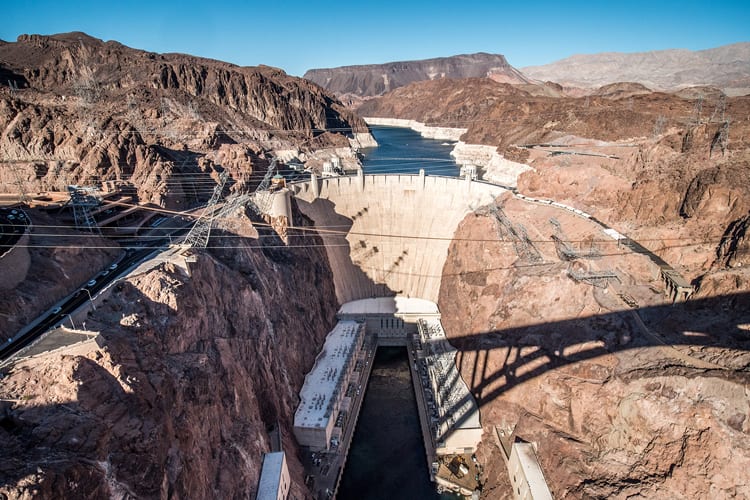Water was on the menu for January’s Valley Partnership Friday Morning Breakfast.
A standing-room only crowd gathered at Phoenix Country Club to hear from five of Arizona’s most influential leaders when it comes to water policy. Valley Partnership president and CEO Cheryl Lombard moderated the discussion, which brought together Tom Buschatzke, director of Arizona Department of Water Resources, Ted Cooke, general manager of Central Arizona Water Conservation District, Governor Stephen Roe Lewis of the Gila River Indian Community and Joe Gysel, president of EPCOR, USA.
Much of Friday’s discussion focused on the Lower Basin Drought Contingency Plan (DCP), a vital, multi-state plan to curb water usage from the Colorado River and hopefully stabilize and even raise water levels in the river and all of the reservoirs, like Lake Powell in the Upper Basin, and Lake Mead in the Lower Basin. The federal government has set a Jan. 31 deadline for all Colorado River Basin states to approve the DCP, otherwise, the Bureau of Reclamation will step in and take necessary steps to stabilize the water levels at Lake Mead and Lake Powell.
“The United States won’t let Lake Mead crash,” Cooke said multiple times during the panel discussion.
The other six states involved in the DCP, both the Upper Basin and Lower Basin, have agreed to the strategies in the plan. Arizona has not.
“We’re the only state that has to have DCP approved by its legislature,” Lombard said. “All the other states are done. They’re waiting on us.”
What was clear from all of the panelists at the event is that Arizona cannot wait to join the other states and approve the DCP and begin taking steps to protect a dwindling water supply.
“What DCP does is give us a period of time of relative certainty where the supply of water that we have today will not be destroyed while we’re working on those other things,” Cooke said. “There are issues that exist already, desalinization, groundwater depletion, the over-allocation of the Colorado River, DCP won’t fix any of those things.”
Early in the presentation, Buschatzke showed the areas affected by the Lower Basin DCP and some key elements of the plan, as well as how the water levels in Lake Mead have been dropping rapidly. He stressed how important passage of the DCP was to the future water supply stability for the state.
“We need all of you to go to your favorite legislator and express your support for the DCP, and especially to help them understand that Arizona’s implementation plan was put together very carefully, it’s a very delicate balance,” Buschatzke said. “That delicate balance can’t be disturbed. We can’t start hanging ornaments on this Christmas tree or if legislation is amended in a way that upsets that balance, I think it’s very easy for the whole thing to quickly fall apart.”
But, as Lombard stressed, “This is only one element. We’re going to sound the alarm on water shortage and what I’m afraid of is ‘should we grow?’ When a shortage happens, how does the state proceed, because we really do have water, we just need money to build the infrastructure to move it around.”
Gysel spoke on how EPCOR, USA is handling its management of troubled Johnson Utilities. EPCOR, USA was appointed the interim manager of Johnson Utilities in July 2018 after years of customer complaints and violations of water quality and service. What Gysel said EPCOR, USA found was a system in dire need of maintenance and in on case the full replacement of a water treatment facility. Another big challenge was finding a staff that was undertrained and underpaid and a company that was failing its customers.
“Wow, careful what you ask for,” Gysel said. “It’s the project that keeps giving and giving and giving. Part of the challenge that we faced when we took over is I don’t think people expect their effluent sewage to be running down the street. It was. And this is just not acceptable.”
Johnson Utilities’ service area covers approximately 80,000 people in Pinal County. The state of the Johnson Utilities system forced Arizona utility regulators to place a partial moratorium on new water and sewer connections in the company’s coverage area as EPCOR works to bring the system up to standards. Gysel also said that EPCOR is working towards a system connection with the City of Queen Creek.
“We are recommending that to the owner, whether you need that to meet your peak demand or not, having a connection with another source is just good management practice,” Gysel said. “We feel that with the efforts that we have, we can service existing customers this year with or without a connection with Queen Creek.”




